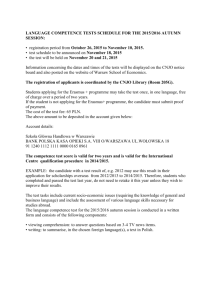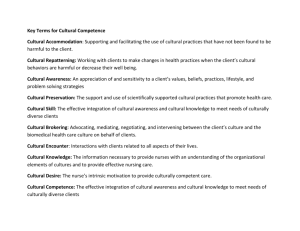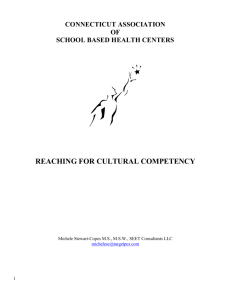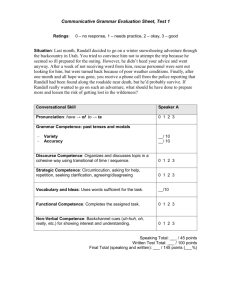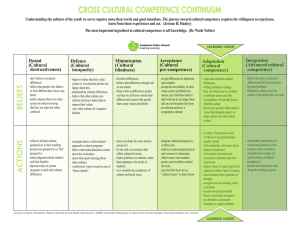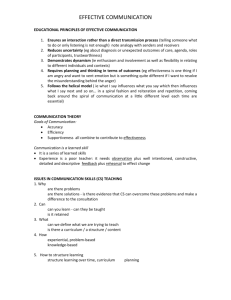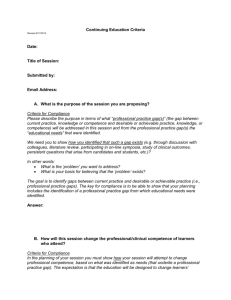Cultural-Competence-Continuum
advertisement
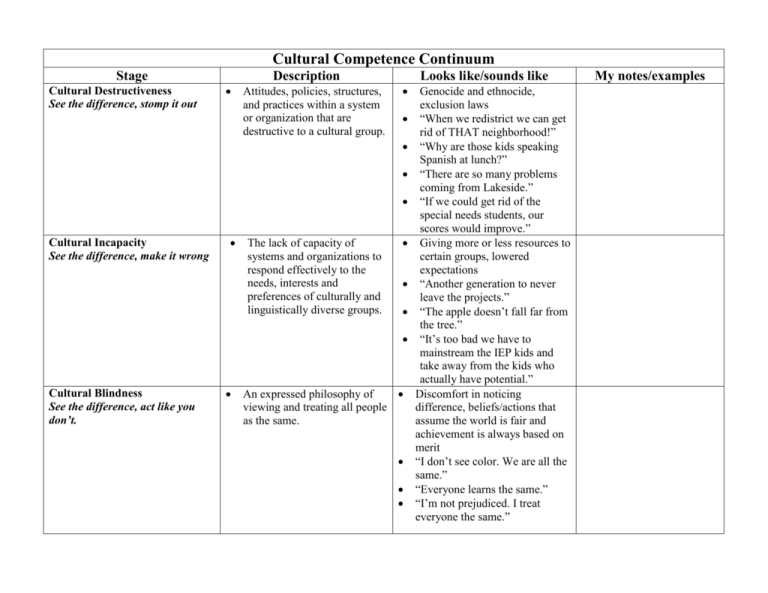
Cultural Competence Continuum Stage Cultural Destructiveness See the difference, stomp it out Description Attitudes, policies, structures, and practices within a system or organization that are destructive to a cultural group. Looks like/sounds like Cultural Incapacity See the difference, make it wrong The lack of capacity of systems and organizations to respond effectively to the needs, interests and preferences of culturally and linguistically diverse groups. Cultural Blindness See the difference, act like you don’t. An expressed philosophy of viewing and treating all people as the same. Genocide and ethnocide, exclusion laws “When we redistrict we can get rid of THAT neighborhood!” “Why are those kids speaking Spanish at lunch?” “There are so many problems coming from Lakeside.” “If we could get rid of the special needs students, our scores would improve.” Giving more or less resources to certain groups, lowered expectations “Another generation to never leave the projects.” “The apple doesn’t fall far from the tree.” “It’s too bad we have to mainstream the IEP kids and take away from the kids who actually have potential.” Discomfort in noticing difference, beliefs/actions that assume the world is fair and achievement is always based on merit “I don’t see color. We are all the same.” “Everyone learns the same.” “I’m not prejudiced. I treat everyone the same.” My notes/examples Cultural Pre-competence See the difference, respond to it inappropriately. A level of awareness within systems or organizations of their strengths and areas for growth to respond effectively to culturally and linguistically diverse populations. Tendency for token representation with no clear plan for achieving organizational cultural competence. Cultural Competence See the difference, understand the difference that difference makes. Systems and organizations that exemplify cultural competence demonstrate an acceptance and respect for cultural differences. Cultural Proficiency See the difference; respond positively. Engage and adapt. Systems and organizations hold culture in high esteem and use this a foundation to guide all of their endeavors. Delegating “diversity work” to others, quick fixes, unclear rules and expectations “Diversity is covered through our Language Arts curriculum.” “Mrs. Alvarez is in charge of parent engagement at our school.” “Ill do what I can to make the Special Education students feel a part of my Honors class.” “Make sure you do an activity for Black History Month.” Advocacy, on-going education of self and others, support and risk-taking “You are you and I am me, but together, we are we.” “It is important to take a walk in someone else’s shoes.” Interdependence, personal change and transformation, alliance for groups other than one’s own “I differentiate for the needs of all types of learners in my classroom.” “My boys aren’t doing well in reading. I need to start integrating more nonfiction texts.” “With the addition of _____, our classroom experience has become richer. The other students are also learning from him.”




